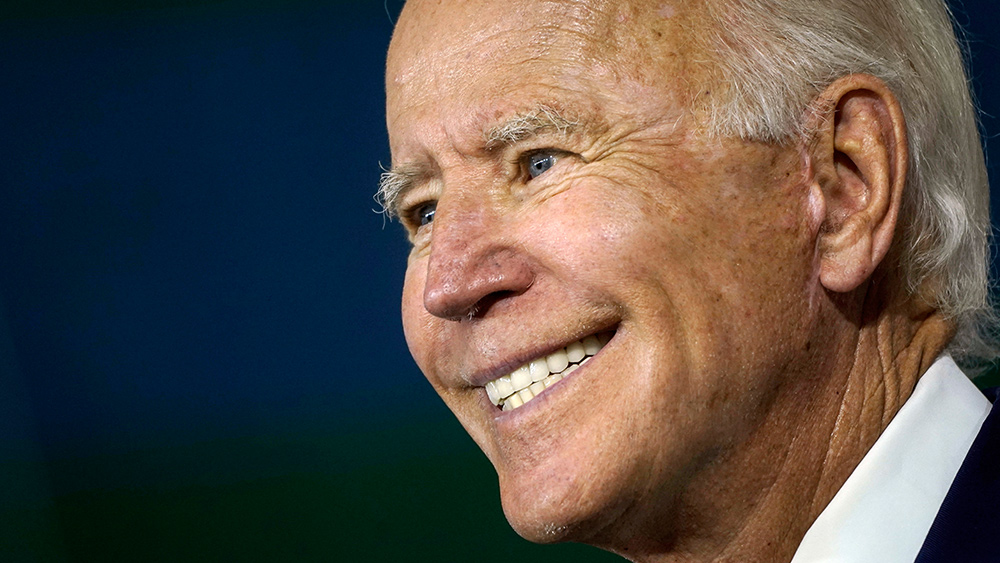8 States eyeing TOTAL BAN on sales of gas-powered cars following Biden’s ambitious phase-out plan by 2032
03/29/2024 / By Zoey Sky

Eight states have announced plans to ban the sale of new gas-powered cars within the next decade. Other U.S. states are also considering joining them. The participating states have gone further than the latest federal legislation announced recently, where the Biden administration released new rules to gradually phase out gas cars by 2032.
Dubbed as the Advanced Clean Cars II, the new federal legislation requires automakers to reduce the tailpipe emissions of new vehicles by at least 50 percent from model year 2026 to 2032. Only zero-emission vehicles can be sold in participating states beginning from the 2035 model year.
To achieve this, the Environmental Protection Agency (EPA) is targeting 35 percent to 56 percent of vehicles that must be replaced by EVs by 2032. Additionally, 13 to 36 percent of vehicles need to be plug-in hybrids by that date.
It was first proposed that at least two-thirds of all vehicles sold by 2030 would need to be electric vehicles, but the plan was postponed to allow carmakers to find more ways to comply. However, carmakers will eventually stop producing full gas-powered successors to muscle cars of the 1960s and 1970s under Biden’s new decree.
Dodge announced earlier this month that the 2024 Charger will be available as a gas-powered muscle car and as a new all-electric vehicle, a first for the automaker.
California was the first state to adopt the Advanced Clean Cars II rule, which aims to put a complete ban on new sales of gas-powered cars by 2035.
Plans in the state specify that 35 percent of all new car sales must be zero-emission by 2026, with the figure increasing to 68 percent by 2030.
Rhode Island was the most recent state to join the list of states that have committed to ban the sale of gas-powered cars. Other states that have adopted the rule include Maryland, Massachusetts, New Jersey, New York, Oregon and Washington.
The District of Columbia has also pledged to follow the rule. Even though other states have adopted versions of the legislation, they still haven’t yet pledged to ban gas-powered cars entirely by the deadline.
In 2023, Delaware and Colorado finalized rules that would require 82 percent of new cars to be zero-emissions vehicles in 2032. Officials have also yet to adopt the 2035 bans.
On the other hand, New Mexico announced last July that it will set annual targets for the sale of zero-emission vehicles and may adopt parts of the Advanced Clean Cars II legislation. Despite the previous announcement, New Mexico still hasn’t endorsed the 2035 ban.
New rule puts pressure on automakers
As more states come out with new plans to ban the sale of gas-powered cars after a certain point, automakers are also pressured to boost their production of electric and hybrid vehicles. (Related: Only half of Ford dealers agreed to sell electric vehicles in 2024.)
According to Kelley Blue Book, an Irvine, California-based vehicle valuation and automotive research company, EVs made up 7.6 percent of new car sales last year. While this is up from 3.2 percent in 2021, there is a clear difference across the U.S. as to who is switching to EVs.
Data from earlier in 2024 showed that Americans in some areas are buying more than 10 times as many electric vehicles than in others. According to figures from S&P Global Mobility, a market research firm, the West Coast, especially California, continued to dominate the market in 2023.
However, other areas, such as “Motor City” Detroit, America’s auto capital, have barely any residents buying electric cars.
Despite the fluctuation in EV purchases, some major automakers are increasing production of electric cars. For example, General Motors expects to have completed a full transition to electric vehicle sales by 2035. In San Jose, at least 40 percent of new car registrations in 2023 were electric. This is the most of any major metro area.
Separate data suggests that hybrid cars are being bought at least three times as quickly off dealer lots compared to EVs.
The latest federal rules announced by the Biden administration have also given hybrid cars a greater part to play in helping reduce tailpipe emissions.
According to Edmunds, a research site, hybrid vehicles are also now selling twice as fast as gas cars. A traditional hybrid vehicle has a gas-powered internal combustion engine and an electric motor or battery that both work together to run the car.
In February, dealer lots usually sold hybrid cars within 25 days and electric vehicles took an average of 72 days. Meanwhile, gas-powered cars were usually sold after 52 days.
According to Consumer Reports’ top car rankings, hybrid vehicles beat fully electric and gas cars in this year’s rankings.
Visit RoboCars.news for more stories about the push for electric vehicles in the United States.
Watch the video below as Health Ranger Mike Adams talks about the dangers of spontaneously igniting electric vehicles.
This video is from the Health Ranger Report channel on Brighteon.com.
More related stories:
Connecticut’s Democratic governor pulls plug on plan to ban sale of gas cars by 2035.
Tesla drivers in NYC grapple with long waiting times due to lack of fast charging stations for EVs.
Sources include:
Submit a correction >>
Tagged Under:
Advanced Clean Cars II, banned, big government, cars, climate change, Connecticut, conspiracy, electric cars, electric vehicles, environment, EVs, flying cars, gas cars, gas powered cars, gasoline cars, green living, Green New Deal, green tyranny, insanity, robocars
This article may contain statements that reflect the opinion of the author
RECENT NEWS & ARTICLES
COPYRIGHT © 2018 BANNED.NEWS
All content posted on this site is protected under Free Speech. Banned.news is not responsible for content written by contributing authors. The information on this site is provided for educational and entertainment purposes only. It is not intended as a substitute for professional advice of any kind. Banned.news assumes no responsibility for the use or misuse of this material. All trademarks, registered trademarks and service marks mentioned on this site are the property of their respective owners.




















